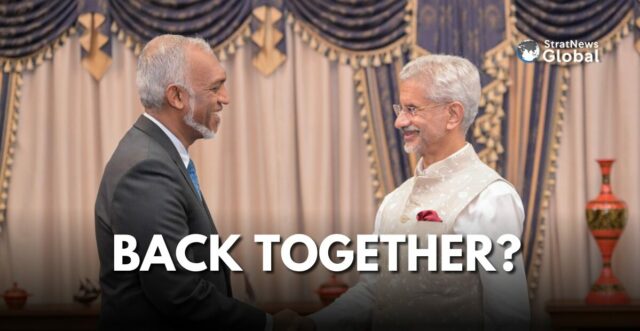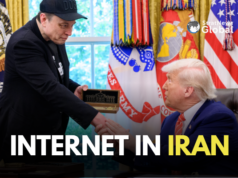What explains the seeming turnaround in India’s relations with the Maldives? Readers will recall the fire and fury from Mohammad Muizzu in October last year ahead of his election as president and the “India Out” campaign.
Much of it seemed (unfairly) centred on the less than 100 Indian military personnel stationed there to help operate and maintain two helicopters and a Dornier aircraft (reports say the military personnel have since been withdrawn and replaced with civilian personnel).
Cut to May this year and Maldivian Foreign Minister Moosa Zameer was in Delhi followed in June by Muizzu, who attended Prime Minister Modi’s swearing in ceremony.
But it would seem the real agenda was to get the bilateral relationship back on track. Note the readout from the External Affairs Ministry quoting Dr. Jaishankar on his three-day visit to the island over the weekend.
“For India neighbourhood is a priority and in the neighbourhood Maldives is a priority.”
Referring to his inauguration of a mental health unit, a speech therapy unit, education support unit, streetlights in different towns and cities, Dr. Jaishankar spoke about helping “build infrastructure, broaden the economic base, make the economy more robust and resilient.”
There’s more in the readout including bringing India’s UPI revolution to the island, 1000 more training slots for Maldivian civil servants, sewerage projects across 28 islands and even defence cooperation.
“I will be meeting the defence minister to take stock of our defence and security engagement. As neighbours we face common challenges and have a shared interest in maintaining peace and security in the region. After all we both have very big EEZs.”
The last does hint at India renewing its military role in the island although details are lacking. We should know more in the days ahead but as Dr Rajesh Rajagopalan of Jawaharlal Nehru University says, “President Muizzu knows that India as a bigger proximate neighbour, can do a lot for his country. It may not be practical to try and enlist other countries to do the kind of projects that India can do.”
It also underscores a practice commonly seen in the neighbourhood. While in the opposition, it’s convenient to criticise India, when in government the realities are different. Governments need to get the development wheels moving and India has substantially improved its ability to deliver projects in a time bound manner and at affordable cost.
“This is due to competition from China,” says Dr Rajagopalan, “which has forced India to up its game in the neighbourhood. The days of making commitments towards various projects and forgetting about it are over.”
What in some circles in Delhi maybe seen as an overtly pro-China shift in Male, may actually be a more nuanced posture in trying to maximise economic benefits by constructive engagement with both India and China. It explains what Maldives and India’s other neighbours are doing.
Take the case of Sri Lanka which has a long history of flirting with the US, Pakistan and of course China. India has rescued it from bankruptcy and helped the economy get back on its feet. In return there have been promises to respect India’s red lines (not giving China bases, turning away Chinese survey vessels from Lankan ports etc).
Successive governments in Nepal have used the China card against India, but geography tells them what is practical and doable. Grand plans of shipping goods to China’s ports make no economic sense when Kolkata and other ports on India’s eastern seaboard are within easy reach.
India’s neighbours have improved their room for manoeuvre vis a vis India by playing the China card. Not very different from the kind of games India plays to ensure its “strategic autonomy”. If it works for New Delhi, it can work for others too.
Thirty eight years in journalism, widely travelled, history buff with a preference for Old Monk Rum. Current interest/focus spans China, Technology and Trade. Recent reads: Steven Colls Directorate S and Alexander Frater's Chasing the Monsoon. Netflix/Prime video junkie. Loves animal videos on Facebook. Reluctant tweeter.





